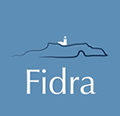Addressing Environmental Impacts of Scottish Salmon Farming
The Best Fishes project was run by environmental charity Fidra from 2016-2023. The aim of the project was to improve transparency across the Scottish salmon aquaculture sector and encourage best practice to minimise its environmental impacts. Over the course of the project significant steps were made to increase transparency throughout Scottish salmon supply chains.
As of November 2023 Fidra has concluded this phase of work in relation to the environmental impacts of Scottish salmon farming. This website is now archived and to be used as a source of information and resources for stakeholders and NGOs in their continuing work to improve transparency and traceability though the Scottish salmon supply chain.
For more information on Fidra’s current projects please visit the Fidra website. You can contact us at info@fidra.org.uk with further questions regarding the Best Fishes project.
What Are The Environmental Impacts of Salmon Aquaculture?
Fidra’s approach
Fidra actively worked to alleviate the impacts of the salmon industry on the environment. We aimed to ensure supply chain traceability was at the forefront of aquaculture practices, with the long-term goal of full transparency in the industry. To achieve this we asked for:
- The creation of a salmon farming dashboard
By working with a variety of stakeholders we hoped to facilitate the development of an online dashboard which will provide detailed and clear information on the environmental impacts of individual salmon farms in Scotland.
Outcome – Online reporting of regulatory criteria is being reviewed by the Scottish Environmental Protection Agency (SEPA), with a new site-specific system expected to be active from 2024. This is a major step in improving transparency and traceability of Scottish salmon farming.
- Retailers to improve the level of information on the packaging of products
We collected evidence from the public, showing there is an appetite for more transparency to help customers understand the individual environmental impact of the salmon products they consume.
Outcome – Retailers have taken steps to increase the information available on product packaging, with more information on seafood sourcing available online than ever before and 8/10 major UK retailers now part of the Ocean Disclosure Project. We developed the Red-Amber-Green (RAG) Retailer Transparency Table to clearly show and track the level of transparency and traceability currently associated with Scottish salmon at each of the major UK retailers.
- Best practice to be followed across the industry
We liaised with salmon producers and asked them to hold their practices to the highest of standards to reduce the impacts on the local environment and improve long-term environmental sustainability.
Outcome – Fidra hosted and facilitated two workshops and a webinar between 2020 and 2023, creating a forum for knowledge exchange for industry, retailers and other supply chain stakeholders. While the salmon aquaculture industry has taken some positive steps, including individual companies innovating to reduce environmental impacts, there is overall too great an emphasis on growth of the sector. Future growth and expansion should be paused until effective measures to address environmental impacts are implemented.
Fidra have also been active in engaging with actors in the seafood supply chain, to encourage adoption of alternatives to single use polystyrene fish boxes. This included the publication of our report assessing alternatives to Expanded polystyrene (EPS) boxes, commonly used though seafood supply chains, and participation as part of a COP26 panel on the issue.
- Government and regulators to adopt robust legislation based on best practice
Strong regulations and effective enforcement to create accountability across the industry which will lead to lasting positive effects on the environment.
Outcome – Fidra participated in engagement with policy makers and regulators over the course of the Best Fishes project. This engagement included participation in government consultations, working groups and multi-stakeholder regulator groups including SEPA’s Finfish Aquaculture Advisory Panel and Scottish Government’s Scottish Aquaculture Council. These led respectively to the development of SEPA’s sea lice risk assessment framework and Scottish Government’s ‘Vision for Sustainable Aquaculture’ The Vision which was published in July 2023, sets out the strategy for the future of Scottish aquaculture.

